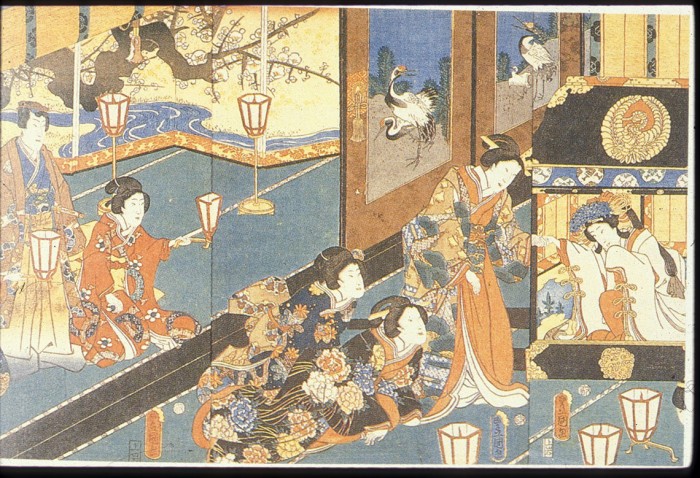
There is a long tradition of rebellion by peasants in premodern times. Revolts sometimes occurred because of starvation as a result of crop failure. At other times, peasants revolted as a limited protest against the government of the time. Their intention was not to overthrow the government, but to gain something specific, like relief from high taxes, a flood or an incompetent official. Unlike in China where peasants were occasionally the basis for uprisings which overthrew a dynasty, peasants in Japan never threatened the feudal government. In the Edo period, there were several peasant uprisings, especially after 1800, but the revolts were usually local and small, although they could be frequent.
One example of disturbances by peasants was the revolt which resulted from Princess Kazunomiya’s trip from Kyoto to Edo. She traveled with such a large number of people and huge volume of belongings that the farmers from the sukego villages along the Nakasendo objected strongly to the time and labor they had to devote to her travels. Toward the end of the trip, the service of nearly 20,000 peasants was required, placing a great burden on the peasants. Rather than risking a violent and embarrassing insurrection, the authorities agreed to compensate the peasants for the sacrifices and time they gave to Kazunomiya.
Some peasant uprisings were a form of negotiation; by creating a disturbance, especially with a threat of violence, the peasants brought attention to the inability of their local leaders to perform their duties adequately. The possibility of outside attention by someone in authority might force the local leaders to compromise with the peasants. Other uprisings were violent revolts. In both cases, those involved often signed pledges of unity. They would sign their names in a circle so that the ring leaders were impossible to identify by being at the top of a long list.
Some scholars have argued that revolts were caused by extreme suffering, but recent research has shown that most revolts were caused by rising expectations which were not being met or, conversely, the fear that a comfortable standard of living would be lowered. Many of the revolts at the end of the Edo period may have been a method of protest which protected the well-being of the peasants. Or, on the other hand, they may have been more revolutionary in nature.

